In the United States, high blood pressure complicates around 10% of all pregnancies. Controlling high blood pressure can largely be accomplished by proper prenatal care and regular monitoring. However, a more serious kind of high blood pressure may occasionally develop. Preeclampsia is the medical term for it. High blood pressure is dangerous under normal circumstances, but even more so when pregnant.
What is Preeclampsia?
A kind of elevated blood pressure known as preeclampsia appears after 20 weeks of pregnancy. Other organs, such as your kidneys, liver, blood, or brain, may also indicate injury. The mother and the child might be at grave risk from this situation. In most cases, high blood pressure has no symptoms. In actuality, most people with high blood pressure are unaware of it. You must show up to all of your prenatal checkups because of this. Your blood pressure can be measured at these times. When preeclampsia symptoms emerge, they may include:
- Elevated blood pressure: continuous blood pressure readings of 140/90 mm Hg or above.
- Proteinuria: A urinary test frequently finds excess protein in the urine.
- Swelling: Swelling that occurs suddenly and significantly, especially in the hands, feet, and ankles.
- Weight gain: a sudden and substantial weight gain unrelated to typical pregnancy.
- Headaches: strong or ongoing headaches that don’t go away with over-the-counter pain relievers.
- Vision changes: visual problems such as blurriness, double vision, light sensitivity, or momentary blindness.
- Fatigue or dizziness: extreme fatigue or dizziness, especially when these symptoms are present in addition to others.
Because it can create major consequences for both the mother and the unborn child, preeclampsia is risky. Left untreated, it can harm many organs, including your liver and kidneys, and raise the risk of stroke, blood clotting, placental abruption, premature delivery, low birth weight, and maternal and fetal mortality. Healthy lifestyle choices and routine prenatal care are combined to prevent preeclampsia. Here are some crucial actions:
- Prenatal appointments regularly allow medical professionals to monitor your blood pressure, urine, and general wellness.
- Healthy eating: A diet consisting mainly of fruits, vegetables, whole grains, and lean meats that is balanced can help lower the risk of preeclampsia.
- Adequate hydration: Keeping hydrated by consuming enough water enhances general health and helps to maintain good circulation.
- Regular physical activity: During pregnancy, taking part in safe and advisable physical activities can improve cardiovascular health and lower the risk of preeclampsia.
- Controlling weight increase: By maintaining your weight growth within the acceptable range for pregnancy, you can reduce your risk of preeclampsia.
Smoking raises the likelihood of getting preeclampsia. Thus quitting is essential to avoid it. Smoking causes blood arteries to deteriorate, reduces blood flow, and increases inflammation, all of which have a role in preeclampsia. Quitting smoking lowers these risks and improves the general health of the mother and fetus.
Preeclampsia Prevention and Treatment with Rosenberg Maternal-Fetal Medicine.
Do you worry that preeclampsia will develop throughout your pregnancy? Contact Rosenberg Maternal Fetal Medicine immediately. Their knowledgeable team is prepared to assist in preventing and treating preeclampsia, and they have two convenient locations in Hewlett, NY, and Suffern, NY. Call the Suffern office at (845) 764-9880 or the Hewlett office at (516) 501-9840. Don’t delay; get the specialist treatment you need now to safeguard your health and your child’s safety.

